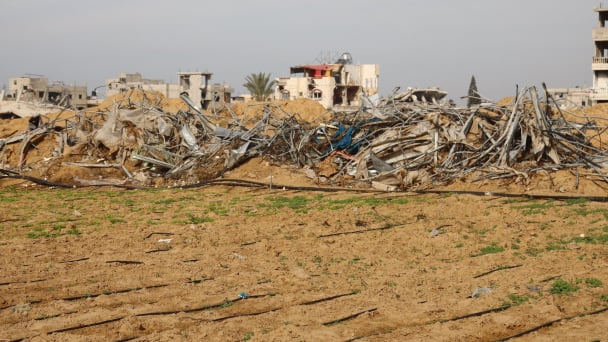June 1, 2025 | 19:20 GMT +7
June 1, 2025 | 19:20 GMT +7
Hotline: 0913.378.918
June 1, 2025 | 19:20 GMT +7
Hotline: 0913.378.918
Inside is an algae sample known as "snow blood", a phenomenon that accelerates Alpine thaw and that scientists worry is spreading.
"These algae are green. But when it's in the snow, it accumulates a little pigment like sunscreen to protect itself," said Marechal, research director at Grenoble's Scientific Research National Center, who was collecting laboratory samples on Le Brevent mountain with teammates.
Around his feet, patches of red snow can be seen gleaming in the sunlight.
The algae was first described by Aristotle in the third century BC. But it was only formally identified and given its Latin name Sanguina nivaloides in 2019.
Scientists are now racing to understand it better before its too late, with snow volumes falling due to rising global temperatures which are hitting the Alps disproportionately hard.
"There's a double reason" for studying the algae, Marechal explained. "The first is that it is an area that is little-explored and the second is that this little-explored area is melting before our eyes so it's urgent," he said.
Some scientists, including Alberto Amato, genetic engineering researcher at CEA Centre de Grenoble, say the volumes of algae appear to be growing due to climate change, with higher carbon dioxide concentrations in the atmosphere favouring blooms.
Research is ongoing and what is certain is that the presence of the algae accelerates snow-melt, since algae's pigment reduces its ability to reflect the sun's heat.
Other types of algae, including a purple variety, as well as soot from forest fires have the same effect. If the algae do spread, snow and glacier melt around the world could speed up.
"The warmer it is, the more algae there are and the more the snow melts quickly," said Amato. "It's a vicious circle and we are trying to understand all the mechanisms to understand this circle so we can try to do something about it."
Heat trapping carbon dioxide emissions from making cement, a less talked about but major source of carbon pollution, have doubled in the last 20 years, new global data shows.
In 2021, worldwide emissions from making cement for buildings, roads and other infrastructure hit nearly 2.9 billion tonnes of carbon dioxide, which is more than 7 per cent of the global carbon emissions, according to emissions scientist Robbie Andrew of Norway’s CICERO Center for International Climate Research and the Global Carbon Project. Twenty years ago, in 2002, cement emissions were about 1.4 billion tonnes of carbon dioxide.
Driven by China, global cement emissions globally have more than tripled since 1992, recently growing at a rate of 2.6 per cent a year. It’s not just that more cement is being made and used. At a time when all industries are supposed to be cleaning up their processes, cement has actually been going in the opposite direction. The carbon intensity of cement - how much pollution is emitted per tonne - has increased 9.3 per cent from 2015 to 2020, primarily because of China, according to the International Energy Agency.
(Reuters; AP)

(VAN) Vikas Rambal has quietly built a $5 billion business empire in manufacturing, property and solar, and catapulted onto the Rich List.

(VAN) Available cropland now at less than five percent, according to latest geospatial assessment from FAO and UNOSAT.

(VAN) Alt Carbon has raised $12 million in a seed round as it plans to scale its carbon dioxide removal work in the South Asian nation.

(VAN) Attempts to bring down the price of the Japanese staple have had little effect amid a cost-of-living crisis.

(VAN) Fourth most important food crop in peril as Latin America and Caribbean suffer from slow-onset climate disaster.

(VAN) Shifting market dynamics and the noise around new legislation has propelled Trouw Nutrition’s research around early life nutrition in poultry. Today, it continues to be a key area of research.

(VAN) India is concerned about its food security and the livelihoods of its farmers if more US food imports are allowed.